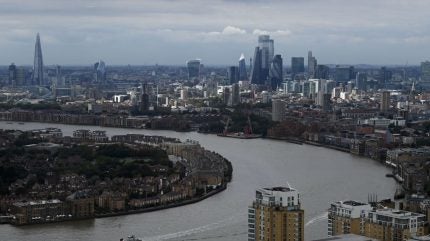

Foreign investment to a country tends to be the ultimate vote of confidence, economically and politically speaking. On the flip side, when it does not come through it highlights where and how a country is going wrong.
Late in 2019, Elon Musk announced Tesla’s plan to build its fourth ‘gigafactory’ in Berlin, thereby pouring billions of dollars into the city-region and creating 10,000 jobs through the electric car factory.
This ginormous reward could have been Birmingham’s, or rather the West Midlands’, which is one the UK’s leading regions for advanced manufacturing and electric vehicles. The location was very much in the running for Tesla’s investment, not least since it boasted a much longer history of car building than Berlin.
Unlike the region of the German capital, however, the West Midlands had no record of receiving lavish sums of public money for research and development (R&D). In fact, for decades, the UK has never properly thought about using R&D money as a tool for promoting economic development. It is very likely that this is one of the main reasons why Berlin walked away with the deal.
The below chart shows, quite shockingly, the extent of the UK’s problem with R&D funding. While such money rose sharply to London between 1995 and 2015, it remained utterly static towards the West Midlands (despite a significant rise in private sector money to the region during that period).

US Tariffs are shifting - will you react or anticipate?
Don’t let policy changes catch you off guard. Stay proactive with real-time data and expert analysis.
By GlobalDataMismanaged spending such as this is one of the main reasons why so much business and skill is clustered in the South East, while cheaper, lower-skilled workers are found everywhere else (exceptions notwithstanding).
The UK’s next-largest cities after London are far less competitive in economic terms than their European and US counterparts, research from the Centre for Cities has found – something that costs the UK economy close to £50bn every year.
London punches far above its weight
Regional inequality in the UK has become the worst of any comparable developed country, with health, jobs, disposable income and productivity increasingly polarised, according to the latest annual report from think tank IPPR North.
In fact, since 1998 it has grown significantly under both Labour and Conservative governments, according to a recent data article by Investment Monitor. The GDP per capita of the UK’s poorest region, the North East, was 45% that of its richest region, London, in 1998. Fast-forward 11 years and this share had fallen to just 40%.
Is it any surprise, therefore, that London punches so far above its weight in terms of inbound foreign direct investment (FDI)? As the below chart shows, the UK capital is also the only region whose intake of national greenfield FDI (35% in 2018) is significantly more than its contribution to the UK’s gross value added (GVA) – 24% in 2018. GVA has replaced GDP as the best measure of economic welfare in a population. Meanwhile, in all other parts of the UK, excluding the West Midlands and the North East, the trend is the exact opposite.
These glaring disparities suggest several things. First, that the UK’s underperforming regions are not attracting as much FDI as they deserve. Second, that London punches above its weight because it is indeed very attractive to investors – definitely more so than elsewhere in the UK. Third, that the previous two points are a result of long-standing imbalances in the UK economy.
Why London has brain-drained the UK
The UK’s regional economic inequality is both reflected and reinforced by the massive skills challenge that has hamstrung the country for decades, a problem that has been exacerbated by Covid-19.
Relative to the size of its population, London has the highest proportion of people with degrees (and by some distance). The UK’s skills problem is linked to decades (maybe even centuries) of mismanaged public spending, as already highlighted by the South East’s monopoly over public R&D funds. Government investment in R&D is lagging behind private sector investment in many parts of the country outside the South East – as shown in the chart below.
If the UK distributed R&D funds to the whole country as it does to the South East, it would spend £4bn more. This imbalance is a missed opportunity to use public spending to 'level up' areas with weaker economies.
Westminster should not be spending less on the South East, but spending more on places where it would have an impact (such as Manchester and Birmingham), since most locations in the UK do not have the necessary skilled workers, companies and ecosystem to absorb R&D funding.
As things stand, the UK’s public R&D funding – issued by the UK Research and Innovation body – is focused on 'academic excellence'. In other words, ‘historic excellence’ centred in London, Oxford and Cambridge, thereby neglecting emerging or potential excellence in academia and business.
This is to the detriment of up-and-coming talent in Manchester, Leeds, Birmingham and other large cities where there are highly innovative businesses that have not yet been backed up with the level of public investment they deserve.
A classic example of this, more than a decade ago now, was the government’s delayed support for Manchester’s up-and-coming graphene industry, which simply did not get the quick funding it deserved. A big part of the problem is that the vast majority of the boards and institutions assigning money are based in the South East and meet in central London, thereby making them disconnected from the rest of the nation.
In mid-July, Prime Minister Boris Johnson reaffirmed his commitment to better R&D spending in the UK, a very welcome sign. Resolving the issue is one of several key steps towards 'levelling up' the UK, a development that would undoubtedly be reflected in more evenly spread FDI to the UK in the decades to come. Investment Monitor will be watching.


